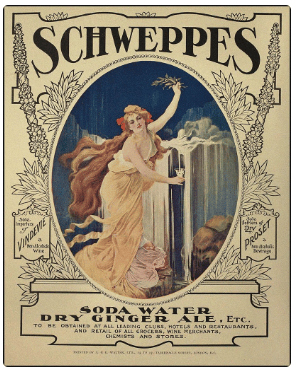- WATER WELLNESS
- Posts
- more bubbles
more bubbles
ancient wellness in a bottle
WATER WELLNESS
Hydration education you won’t get anywhere else.
Tools, stories, philosophy, and upstream thinking.
HEY FROM THE SOURCE
Wellness can be noisy. My aim here is simple: to sift through the myths, surface what’s real, and share ideas that actually move us forward. No water, no wellness. Self-care begins with water care, from the way your cells hydrate to the way you exhale by the sea. This October, we’re turning to mineral waters. Welcome to the Healing Waters series.
If someone forwarded you this email, you can subscribe to get future issues directly in your inbox 💌
Splash of the Week
The History of Bubbles
Gently sparkling drinks are my favourites. The tiny bubbles rise like a celebration, dancing across your tongue. It may seem very German to love sparkling water, but the tradition has deep roots in naturally carbonated springs once praised as healing waters.
An OG Spring in Germany
Sparkling water is often referred to as seltzer water.
The word seltzer doesn’t come from a marketing genius, but from a little spa town in Hesse, Germany: Selters.
Its mineral-rich spring was first mentioned in 772.
“Saltrissa” is the historical predecessor of the name “Selters,” an Alemannic term for places where highly mineralised water springs up from the earth.
Over time, Selters water had become famous. Physicians praised its health benefits, Jakob Theodor Tabernaemontanus, one of the great water doctors of the Renaissance, ascribed almost miraculous powers to it.
This led to mineral waters were being sold and shipped, sealed into sturdy stoneware jugs and exported across Europe and beyond. Selters was leading the charge in Germany, following Spa in Belgium as one of Europe’s most sought-after healing water sources.
In 1727, Professor Friedrich Hoffmann declared the Selters spring “the famous fountain of health in Germany.”
Naturally carbonated mineral waters weren’t just a refreshing drink; they were medicine.
Johann Wolfgang von Goethe always kept Selters bottles in his household. For him, and many others, sparkling mineral waters were his daily tonic.
Hydration culture then was simple: water was treated as medicine, a daily tonic drawn directly from the source.
Today, hydration has become highly engineered.
We no longer rely on healthy springs alone; instead we have filters, sachets, powders, and endless bottles marketed with electrolyte blends, adaptogens, pH claims, “alkaline” promises, even “protein water” or “vegan water.”
The message seems to be “plain water isn’t enough: you need water plus something to feel complete.” And of course, you should drink more, and buy more.
But perhaps the secret has not changed since Goethe’s time: mindful sips and hydrating lifestyles matter more than hacks. True hydration also comes through water-rich foods, movement, time outdoors, natural light, joyful social connections, and rest.
The bubbles in your glass may be old or new, but their reminder is timeless, hydration is about harmony, not hype.
Discovering the Secret of Fizz
For centuries, no one knew why these waters sparkled. The lively bubbles seemed like a gift from nature itself. Only in the 18th century did science catch up.
In 1767, the Englishman Joseph Priestley discovered how to capture “fixed air” (what we now call carbon dioxide) and infuse it into water. He published his findings, though he never sought to profit from them.
A few years later, a German-born watchmaker in Geneva, Johann Jacob Schweppe, took Priestley’s discovery and turned it into a craft. Around 1780, he developed a practical method to carbonate water on a larger scale. His vision was simple but profound: to bring the taste and vitality of spa springs to people everywhere.
By 1792, Schweppe had moved his company to London. His bottles, egg-shaped at first, to better trap the fizz, carried man-made sparkling water into the world.

© Getty Images / Heritage Images - Werbeplakat für Schweppes, 1908
From there, it was only a short leap to sodas: add syrups, sugar, fruit, and suddenly the 19th century was alive with soda fountains and flavoured fizzy drinks.
Why This Matters for Us
When you pour yourself a glass of sparkling mineral water today, you’re not just gulping water to meet your 3 litres a day target, you’re joining a tradition that stretches from ancient springs to modern kitchens.
The bottled water industry has often stripped water of its soul, turning it into a convenience product. But the original idea of bottling was something else entirely: to carry the benefits of special healing springs to people who had no access to them.
— Clouds
☁ Visionary Voices
The Secret Life of Bubbles
And if you want to dive deeper into the fascinating world of bubbles, not just in water but across nature, I recommend this documentary: The Secret Life of Bubbles.
Landed here by chance? Stick around — we make hydrating way more fun. Hit subscribe.
Until next time! ☁
Disclaimer: This newsletter does not provide medical or nutritional advice. The content shared here is for informational and educational purposes only. To inspire a more mindful and empowered relationship with water, and yourself.